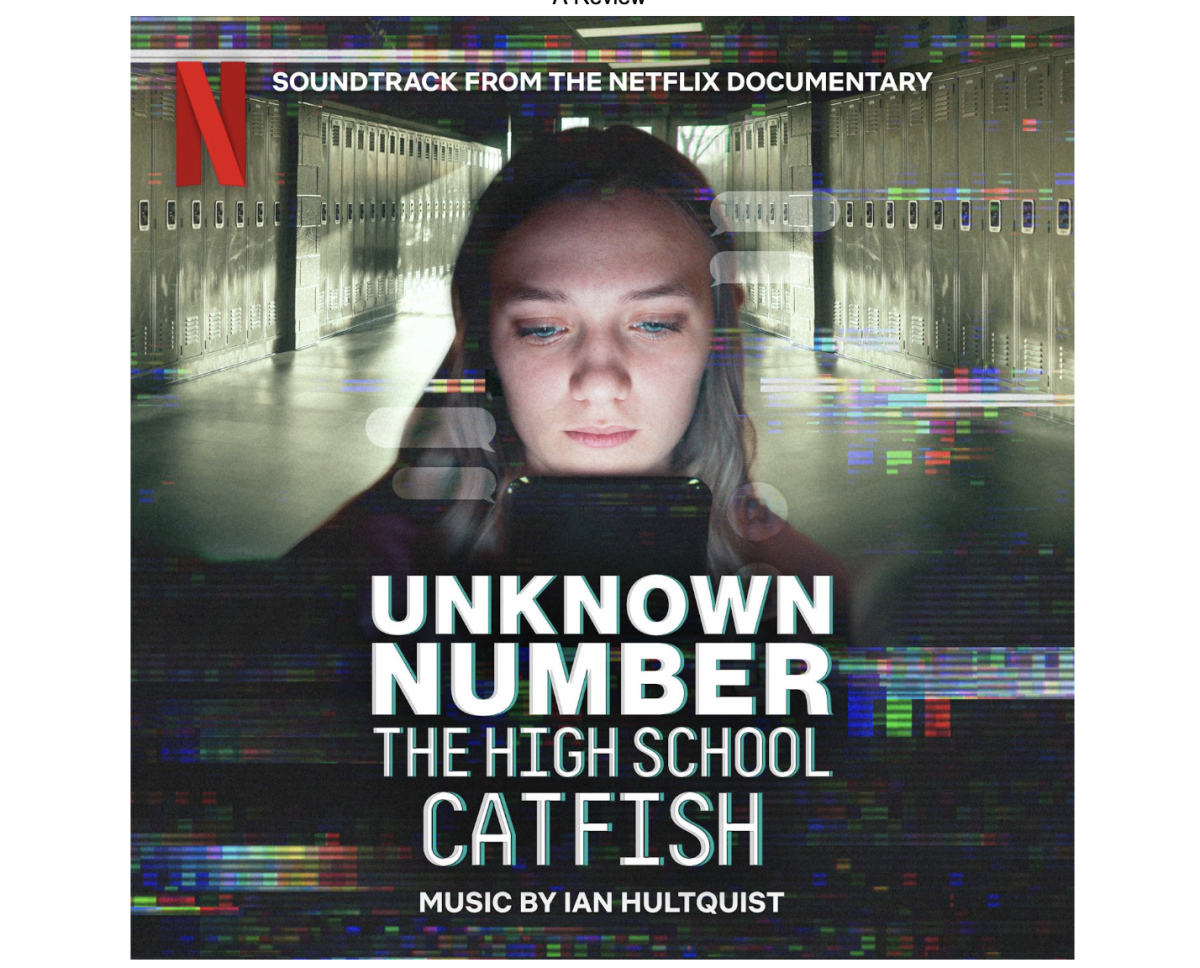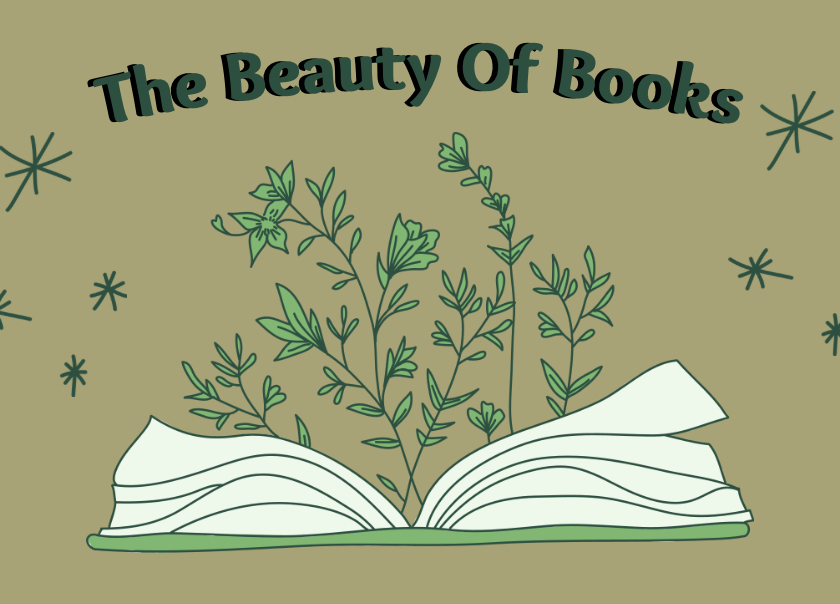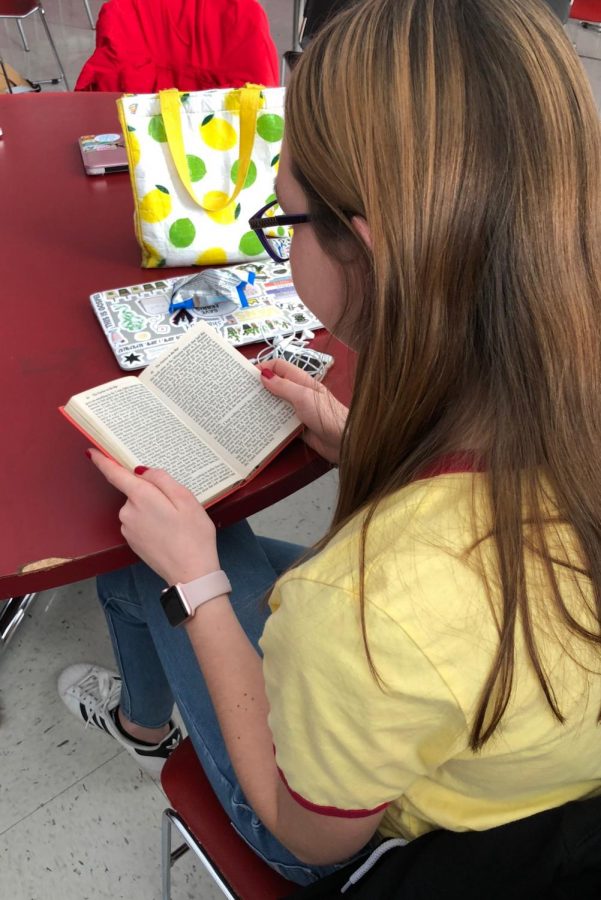To read or not to read
Common required reading books, such as Catcher in the Rye, don’t appeal to every student. Sophomore Bridgette Caufield is seen here reading.
Imagine walking into your English class with the desks turned in a circle, socratic seminar style. You are well aware of the fact that the discussion you are doomed to have is on the long Shakespearean novel you were forced to finish the night before, but you didn’t. This is the harsh reality that many students enrolled in English courses come to terms with on a daily or at least weekly, basis when focusing on a book in their curriculum.
Because of the rapid timeline of going through a book that each English class follows, students find it stressful, time consuming, and rushed when they read. They read to keep up in school instead of enjoying the story and appreciating the unique plot line and characters that each author developed.
If some chapters are due too soon, students read to be prepared for class rather than read out of their own free will and desire. This time crunch often leads to the use of a beloved resource for students in this situation: Sparknotes. Teachers discourage students to use websites that summarize key plot lines and information in the book in a condensed format, but students use these online tools anyway. They end up missing out on the writer’s style and interesting descriptions that only come from reading the original book. Teachers should allow students to tackle reading at their own pace, or better yet, eliminate required reading in its entirety. If they need to fit in lengthy novels to emphasize their curriculum, they should give students a choice between a couple closely related books, so students will be more inclined to read for pleasure.
I find English class readings dull and confusing because of the complex word choice and the old English style that the books are often written in. “Romeo and Juliet,” “The Scarlet Letter” and the “The Great Gatsby” and related texts are common reads that the English department tends to revisit each year. Not only do these and similar pieces of literature tend to convey the language and ideas in a time period that was much different from the modern society we live in today, making it difficult to follow, they also require a time commitment, a whole lot of patience, and a large dictionary to be handy.
Regardless of the difficulty, students should enjoy what they read, even if it’s difficult if they feel connected to the text in some way. If students prefer one classic book to another because of the plot, they should be allowed the option to choose the one that resonates with them. Eliminate the “required” reading and allow students to have a say in what they would like to invest their time in.
Although it may be beneficial for teachers to incorporate only a certain book into their curriculum, they can find numerous books that are related to the overall themes of the lessons so students can have choices that will motivate them to read what they have to.
With choices on the novels they have to read, students can walk into the dreaded class discussion and Socratic seminar on a novel with confidence and excitement. When they see the desks grouped in a circle, they won’t fret. Instead they will be ease, ready to talk about the riveting books they have devoured.
Your donation will support the student journalists at Barrington High School! Your contribution will allow us to produce our publication and cover our annual website hosting costs.































































